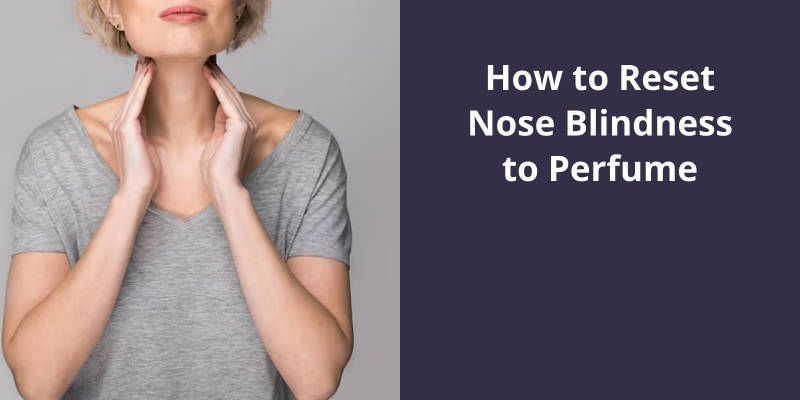Melissa essential oil is a popular and highly valued aromatherapy oil that’s extracted from the leaves and flowers of the Melissa officinalis plant. The oil is known for it’s calming and soothing effects on the mind and body, as well as it’s ability to boost mood and alleviate stress and anxiety. However, like any essential oil, there are certain side effects and risks associated with using Melissa oil, some of which can be quite serious. These side effects can range from mild headaches and stomach pain to more severe symptoms like painful urination, increased body temperature, nausea, vomiting, dizziness, and wheezing.

What Are the Side Effects of Melissa Essential Oil?
Even though the side effects of Melissa essential oil are almost non-existent, it’s still important to use it in moderation. Like all essential oils, it’s highly concentrated and should be diluted properly before use. Overuse or misuse can lead to adverse reactions, so it’s crucial to consult with a qualified aromatherapist before incorporating it into your routine.
Melissa essential oil has a number of benefits for the mind and body, including it’s ability to reduce stress and anxiety, ease digestive problems, relieve menstrual cramps, and improve cognitive function. However, it’s important to remember that essential oils aren’t a substitute for medical treatment.
If you’re pregnant, nursing, or have a medical condition, it’s always best to consult with your healthcare provider before using any essential oils, including Melissa essential oil. Some oils can interfere with prescription medications or cause complications during pregnancy or childbirth.
When using essential oils, it’s also important to follow proper safety guidelines. Don’t apply undiluted essential oils directly to the skin, and don’t ingest them unless under the guidance of a qualified healthcare professional. Always store essential oils in a cool, dry place away from sunlight, and keep them out of reach of children and pets.
However, it’s important to use it in moderation, dilute it properly, and consult with a qualified aromatherapist before use, especially if you’ve sensitive skin or are prone to allergies. Always practice safe usage guidelines, and enjoy the healing benefits of this incredible oil.
How to Properly Dilute and Use Melissa Essential Oil
- First, dilute the Melissa essential oil in a carrier oil such as coconut or almond oil. The suggested ratio is 2-5 drops of Melissa essential oil per 1 tablespoon of carrier oil.
- Apply the diluted solution topically to the affected area or use it for a full body massage.
- You can also use a diffuser to inhale the aromatic properties of the Melissa essential oil.
- When using topically, test a small amount on a small patch of skin first to ensure there’s no allergic reaction.
- Don’t ingest Melissa essential oil unless under the guidance of a qualified aromatherapist.
- Store Melissa essential oil in a cool, dry place away from direct sunlight.
However, there’s still some skepticism about the effectiveness of Melissa oil in treating certain health issues. In this article, we’ll discuss the various benefits of Melissa oil and explore whether or not it truly lives up to it’s reputation.
Does Melissa Oil Really Work?
Additionally, Melissa oil has a calming effect on the body and mind, making it a popular choice for aromatherapy treatments. It’s soothing properties can help reduce stress, anxiety, and depression. It’s also known to improve sleep quality and alleviate insomnia. When applied topically, it can help disinfect wounds and prevent infections.
Melissa oil is also famous for it’s anti-inflammatory properties, making it an effective remedy for skin conditions like eczema, psoriasis, and acne. It’s antiviral and antibacterial qualities are beneficial in treating oral infections such as herpes and cold sores. It can also provide pain relief and reduce swelling associated with arthritis and other inflammatory conditions.
However, it’s essential to note that Melissa oil shouldn’t be used undiluted or in excessive amounts, as it can cause skin irritations and allergic reactions. Pregnant and breastfeeding women should take extra precautions and consult with their healthcare provider before using it.
The quality of Melissa oil greatly affects it’s effectiveness, and opting for a high-quality, pure, and organic product is crucial in reaping it’s benefits. It’s also vital to follow the recommended dosage and use it under the guidance of a qualified aromatherapist or healthcare provider.
However, it should be used with caution, and like any other herbal or natural remedy, it isn’t a one-size-fits-all solution. Conducting thorough research and seeking professional advice is crucial before incorporating it into your wellness routine.
The Potential Interactions of Melissa Oil With Medications or Other Supplements
- Possible interactions between Melissa oil and medications
- Melissa oil and supplements
- The potential risks of using Melissa oil along with certain medications
- How to safely use Melissa oil with other supplements
- Warnings and precautions when using Melissa oil
- Consulting with a medical professional before using Melissa oil
Source: Benefits of Melissa Oil And It’s Side Effects | Lybrate
As with any essential oil, it’s important to know what oils blend well with Melissa in order to enhance it’s benefits and create a unique aromatherapy experience. While Lavender is a popular and obvious choice, there are many other oils that harmonize well with Melissa for both their scent and therapeutic properties, including Basil, Roman Chamomile, Rose, Geranium, Frankincense, and Ylang Ylang. Let’s explore some of these blends in more detail.
What Goes Well With Melissa Essential Oil?
Basil is a complementary essential oil to Melissa, with the two oils working together to help ease stress and calm the mind. Basil has antispasmodic and anti-inflammatory properties that can help reduce muscle tension and pain, while Melissa has calming and uplifting effects that can help reduce anxiety and improve mental clarity.
Roman Chamomile and Melissa are both known for their calming and soothing properties, making them a perfect blend for a relaxing aromatherapy session.
Rose and Geranium are floral oils that blend perfectly with Melissa, creating a sweet and comforting aroma that can help calm the mind, reduce anxiety, and lift the mood.
Frankincense is another essential oil that pairs well with Melissa, with the two oils working together to help promote inner balance and a sense of peace and calm. Frankincense has a woody and resinous aroma that blends well with the citrusy and floral notes of Melissa, creating a grounding and uplifting blend that can help reduce stress and anxiety.
Ylang Ylang is a sweet and exotic oil that goes well with Melissa, creating a sensual and uplifting blend that can help promote relaxation, uplift the mood, and enhance feelings of joy and happiness.
Recipes for DIY Blends Featuring Melissa Essential Oil, Such as a Sleep Aid or Mood-Boosting Blend.
- DIY Sleep Aid Blend: Combine 3 drops of Melissa essential oil, 2 drops of Lavender essential oil, and 2 drops of Cedarwood essential oil in a diffuser before bed.
- Mood-Boosting Blend: In a roller bottle, mix 10 drops of Melissa essential oil, 10 drops of Orange essential oil, and 10 drops of Frankincense essential oil. Top off with your preferred carrier oil.
- Refreshing Room Spray: Mix 10 drops of Melissa essential oil, 5 drops of Peppermint essential oil, and 5 drops of Lemon essential oil with water in a spray bottle. Shake well before use.
- Stress-Relief Blend: Combine 4 drops of Melissa essential oil, 4 drops of Bergamot essential oil, and 4 drops of Ylang Ylang essential oil in a diffuser or inhaler.
- Calming Bath Blend: Mix 4 drops of Melissa essential oil, 4 drops of Roman Chamomile essential oil, and 1 cup of Epsom salt in a warm bath. Relax and soak for 20-30 minutes.
As with many valuable commodities, there are numerous factors that contribute to the high cost of melissa essential oil. In addition to being produced from a seasonal plant that only yields a small amount of oil, the labor-intensive process of harvesting and distilling the oil further drives up the price. But despite it’s steep price tag, the unique properties and therapeutic benefits of this oil have made it a popular choice for those seeking natural remedies and healing practices.
Why Is Melissa Essential Oil So Expensive?
Additionally, melissa essential oil is highly valuable due to it’s therapeutic benefits. It’s been used for centuries to treat a variety of ailments, including anxiety, depression, and insomnia. The essential oil is also known for it’s anti-inflammatory, antiviral, and antibacterial properties.
Furthermore, the process of extracting melissa essential oil is very complex. The plant must be harvested at just the right time, and the oil is extracted using a steam distillation process that requires a large amount of plant material. This labor-intensive process results in a very small amount of oil per plant, increasing the cost of production significantly.
Another factor contributing to the high cost of melissa essential oil is it’s fragility. The plant is very sensitive to environmental stressors, such as changes in weather or contamination from pesticides. As a result, it requires careful cultivation, which further increases the cost of production.
Lastly, the demand for melissa essential oil has increased dramatically in recent years due to it’s popularity in the natural health and wellness industry. This increase in demand has further driven up the cost of the oil.
The History and Traditional Uses of Melissa Essential Oil
- Native to the eastern Mediterranean region
- Used by ancient Greeks and Romans for medicinal purposes
- Traditionally used to treat anxiety, insomnia, and digestive issues
- Has a lemony, citrus scent
- Commonly used in aromatherapy and natural skin care products
When it comes to finding a natural solution for managing depression and anxiety, essential oils can be a fantastic option. Melissa oil is well-known for it’s calming properties, but it can also be quite expensive. For those looking for a more affordable alternative to melissa oil, there are a few other essential oils that may provide similar therapeutic benefits.
What Essential Oil Is Similar to Melissa?
Bergamot essential oil is an excellent option to replace melissa oil because it’s a similar citrusy aroma. The scent of bergamot oil is refreshing and uplifting, and it can help to eliminate feelings of sadness and depression. This oil is also used to reduce stress and anxiety, making it an excellent choice when creating a relaxing atmosphere.
Lavender essential oil is another excellent alternative to melissa oil because it’s calming properties, which help to reduce anxiety and promote relaxation. The soothing floral scent is perfect for creating a calming ambiance to soothe frazzled nerves or insomnia. Lavender oil is widely used in aromatherapy to treat people with depression because it’s believed to act as a relaxant, promoting a sense of well-being.
Both bergamot and lavender essential oils are safe to use for most people and are considered to be non-toxic. However, it’s essential to avoid direct contact with the eye area and any open wounds. Dilution is always recommended when blending essential oils with a carrier oil, especially when targeting a specific condition such as depression.
When using essential oils, it’s crucial to keep in mind that they should never be a substitute for medical treatment. They should always be used as a complementary therapy to help people relax, improve their mood, and reduce feelings of stress or anxiety. People who suffer from chronic depression should always seek professional medical advice before using any alternative therapies.
Essential oils have been used for centuries to heal and soothe the body and mind. However, as their popularity grows, so does concern about their safety, particularly when using them with children. To ensure safe use of aromatherapy, it’s important to stick to essential oils that have been thoroughly researched and found to be safe and effective for use with children over the age of three. In this article, we will explore the safest essential oils to use and how to use them for maximum benefits.
What Is the Safest Essential Oil to Use?
When it comes to using essential oils, safety should always be a top priority. Whether youre looking to use these oils for relaxation, stress relief, or as a natural remedy for common ailments, it’s important to understand the potential risks and benefits associated with different oils.
One of the safest essential oils to use is lavender. Known for it’s calming and relaxing properties, lavender is often used to promote better sleep, reduce stress and anxiety, and even ease minor skin irritations. Studies have shown that lavender may also have antibacterial and antifungal properties, making it a great addition to any natural first aid kit.
Peppermint is another safe and popular essential oil, with a refreshing and invigorating scent. It’s often used to ease headaches, reduce nausea and vomiting, and alleviate symptoms of digestive issues like bloating and gas. When used properly, peppermint can be a highly effective natural remedy.
Citrus oils such as sweet orange or mandarin are also safe choices for aromatherapy. These oils have a bright and uplifting scent, and are often used to boost mood, improve focus and concentration, and promote relaxation. Theyre also a great choice for use in cleaning products, as they’ve natural antibacterial properties.
Finally, ginger is another essential oil that’s been studied and found to be safe for use with children over the age of Known for it’s powerful anti-inflammatory and pain-relieving properties, ginger may be helpful in reducing symptoms of arthritis, menstrual cramps, and other types of chronic pain. It’s also a popular choice for use in massage oils and other topical aromatherapy applications.
Never apply undiluted oils directly to the skin, and avoid using oils that haven’t been properly tested and found to be safe for use. With a little research and common sense, however, aromatherapy can be a safe and effective way to improve your physical and mental well-being.
Essential Oils to Avoid During Pregnancy and Breastfeeding
- Cinnamon
- Clove
- Clary sage
- Fennel
- Juniper berry
- Thyme
- Wintergreen
- Birch
- Pennyroyal
- Rosemary
Conclusion
While this oil may have many therapeutic benefits, it’s important to use it in moderation and under the guidance of a healthcare professional. It’s important to always read the instructions carefully and to make sure that you aren’t allergic to any of the ingredients before using this oil. If you experience any discomfort or unusual symptoms, it’s important to seek medical attention immediately.





